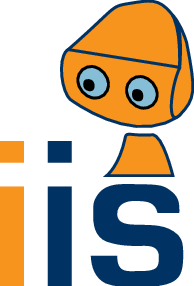Home
People
Projects
Research
Publications
Surveys
Courses
Student Projects
Jobs
Downloads
Sidebar
Table of Contents
Surveys
Computational Models of Affordances in Robotics
Abstract: J. J. Gibson’s concept of affordance, one of the central pillars of ecological psychology, is a truly remarkable idea that provides a concise theory of animal perception predicated on environmental interaction. It is thus not surprising that this idea has also found its way into robotics research as one of the underlying theories for action perception. The success of the theory in this regard has meant that existing research is both abundant and diffuse by virtue of the pursuit of multiple different paths and techniques with the common goal of enabling robots to learn, perceive, and act upon affordances. Up until now, there has existed no systematic investigation of existing work in this field. Motivated by this circumstance, in this article, we begin by defining a taxonomy for computational models of affordances rooted in a comprehensive analysis of the most prominent theoretical ideas of import in the field. Subsequently, after performing a systematic literature review, we provide a classification of existing research within our proposed taxonomy. Finally, by both quantitatively and qualitatively assessing the data resulting from the classification process, we highlight gaps in the research terrain and outline open questions for the investigation of affordances in robotics that we believe will help inform future work, prioritize research goals, and potentially advance the field toward greater robot autonomy.
Action Representations in Robotics
Abstract: Understanding and defining the meaning of ``action'' is substantial for robotics research. This becomes utterly evident when aiming at equipping autonomous robots with robust manipulation skills for action execution. Unfortunately, to this day we still lack both a clear understanding of the concept of an action and a set of established criteria that ultimately characterize an action. In this survey we thus first review existing ideas and theories on the notion and meaning of action. Subsequently we discuss the role of action in robotics and attempt to give a seminal definition of action in accordance with its use in robotics research. Given this definition we then introduce a taxonomy for categorizing action representations in robotics along various dimensions. Finally, we provide a systematic literature survey on action representations in robotics where we categorize relevant literature along our taxonomy. After discussing the current state of the art we conclude with an outlook towards promising research directions.
Philipp Zech, Erwan Renaudo, Simon Haller, Xiang Zhang, Justus Piater, Action representations in robotics: A taxonomy and systematic Classification. International Journal of Robotics Research, 2019. [Link] [PDF] [Abstract] [BibTeX] (website and raw data)

